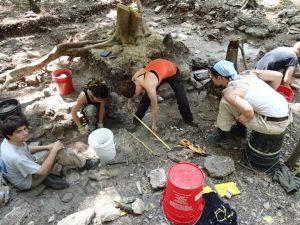
Archaeologists of the Maya Research Program (MRP) plan to field a crew beginning in June 1, 2015, to excavate an ancient Maya elite residential complex and other sites in northwestern Belize. Though less than a month away, the team leadership still has some available positions in the opening session to fill with willing students and volunteers to help them investigate large residential structures and a large shrine north of the site core of Xnoha, a medium-sized Maya center in Belize not far from the border with Mexico.
“We will begin a new excavation of large elite residences north of the site core called the MJ Courtyards,” said Colleen Hanratty, a senior member of the MRP excavation team. “We will also be returning to the large shrine northeast of the site core and will penetrate the floors of this structure, and we’ll also excavate a feature known as “rejollado” just south of the Blue Creek site core. (Blue Creek is another Maya site southeast of Xnoha.).” The 6.5-meter deep rejollado structure measures 350m2 and previous testing and radiocarbon dating indicated that its lowest stratum dates to about 2550 BC.
To provide additional incentives for potential student and non-student volunteers, the MRP is offering a 15% discount on the dig fee for reader-subscribers of Popular Archaeology (PA) Magazine to participate in Session 1 (June 1 – June 14, 2015), one of a total of four sessions that the MRP will be offering for the 2015 dig season. This means that, instead of the currently published rate for volunteers of $1750 for Session 1, the discounted rate would be $1500 for non-students/volunteers, and the student rate of $1500 would drop to $1200. To qualify as a PA subscriber, one must be a currently enrolled premium subscriber to the magazine, or a reader of the free news content of the magazine with the intention of becoming a subscriber.
__________________________________________________
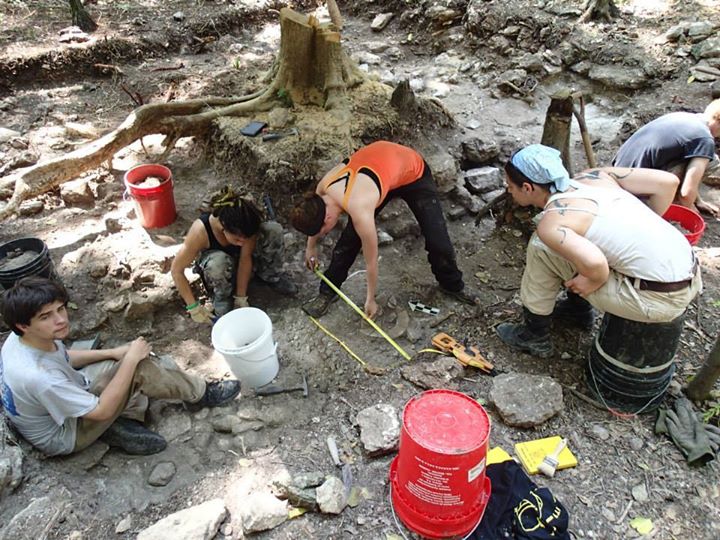 MRP excavators busy at work at a site. Courtesy Maya Research Program
MRP excavators busy at work at a site. Courtesy Maya Research Program
__________________________________________________
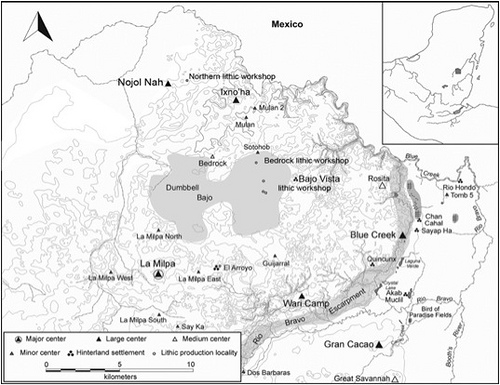 Map of northwestern Belize region showing Xnoha in relation to other sites in the area. Courtesy Maya Research Program
Map of northwestern Belize region showing Xnoha in relation to other sites in the area. Courtesy Maya Research Program
Xnoha is a medium-sized Maya center composed of a large central plaza that is surrounded by numerous residential building groups. It was first identified in 1990 and then surveyed, mapped, and partially excavated between 2002 and 2004 before the current excavation project was initiated. Excavation results have thus far suggested that the site was occupied from the Late Preclassic to the Terminal Classic period (300 BCE – 925 CE). The site is being studied to help archaeologists gain a clearer picture of elite-elite and elite-commoner interaction, relationships, and Maya societal structure. Toward that end, researchers hope to build a ‘domestic structure database’ through the excavation of elite household groups and compounds within the site’s settlement zone.
__________________________________________________
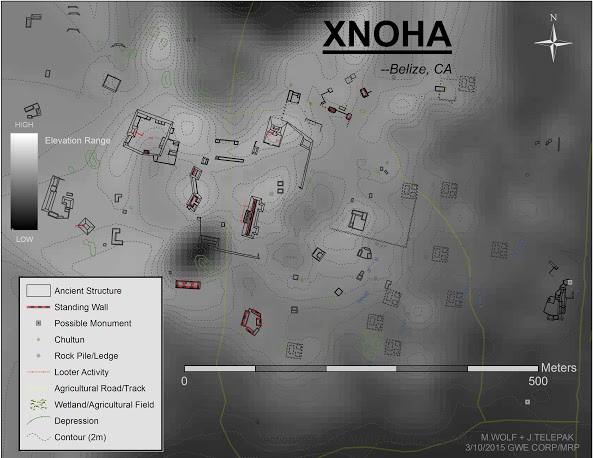 The overall site plan of Xnoha. Courtesy M. Wolf, J. Telepak, GWE Corp and Maya Research Program
The overall site plan of Xnoha. Courtesy M. Wolf, J. Telepak, GWE Corp and Maya Research Program
__________________________________________________
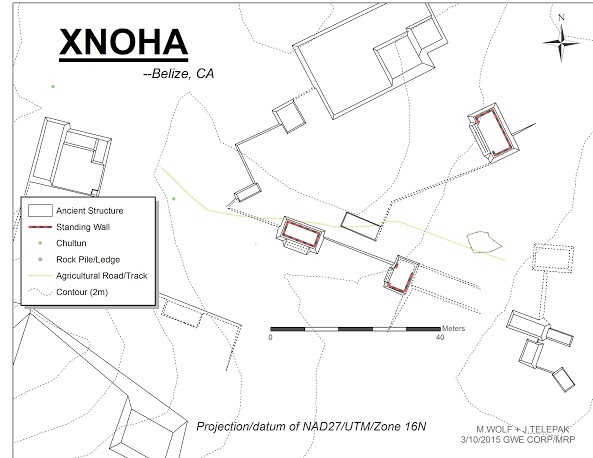 Site plan of MJ Courtyards area, a focus of the 2015 excavations. Courtesy M. Wolf, J. Telepak, GWE Corp and Maya Research Program
Site plan of MJ Courtyards area, a focus of the 2015 excavations. Courtesy M. Wolf, J. Telepak, GWE Corp and Maya Research Program
__________________________________________________
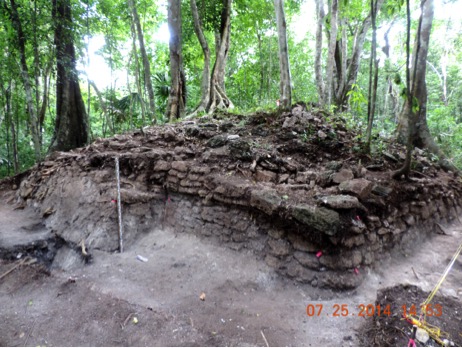 Large shrine (structure 77). Courtesy Maya Research Program
Large shrine (structure 77). Courtesy Maya Research Program
__________________________________________________
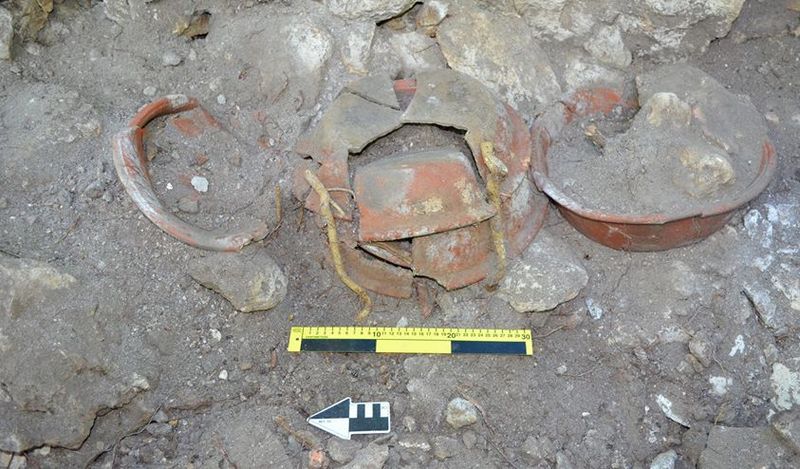 A cache of Sierra Red vessels in situ, immediately after excavation of an elite ‘patio group’ at Xnoha. Courtesy Maya Research Program.
A cache of Sierra Red vessels in situ, immediately after excavation of an elite ‘patio group’ at Xnoha. Courtesy Maya Research Program.
During the 2013 excavations, archaeologists worked at a patio group. A patio group, as defined by Maya archaeologists, is a complex of rectilinear structures placed on a leveled hill in an L-shape configuration that generally face eastward and are positioned around a central plaza or patio (open space). The Xno’ha group is a series of range structures, which are large, vaulted and multi-roomed. Patio groups are usually associated with individuals and families with elite status.
“The approach undertaken was to first locate the patio surface and baseline of two structures before broader stripping of the associated architecture,” said Parmington, a lead archaeologist and the patio group site supervisor. “Not only did the excavations reveal the final phases of the patio’s architecture, a large cache of nine Sierra Red vessels dating typologically to the Late Preclassic period (300 BCE – 250 CE) were recovered below the Patio’s exterior floor. Four of the vessels were stacked in a lip-to-lip configuration with one vessel positioned immediately north and south of the stack. Phytolith analysis of the sediments contained within the vessels determined the presence of sponge spicules – indicating the vessel contained marine sponges. The Pollen and phytolith analysis further indicated they contained large amounts of leaves from shrubs and trees, herbaceous monocots, palm fruits, and plant oils that may have been poured into a lower vessel.”
__________________________________________________
 The cache restored to its appearance as originally configured. Courtesy Maya Research Program.
The cache restored to its appearance as originally configured. Courtesy Maya Research Program.
__________________________________________________
For interested potential dig participants, see the article, “What to expect on an archaeological dig“, by Faithe McCreery.
______________________
To apply, go to the website for more information and instructions. The deadline for application is May 20, 2015. Participants should email Colleen Hanratty at [email protected] to confirm their slot/discount before they submit the form. On the enrollment form, applicants should enter the code statement “popular archaeology discount” where the form asks “How did you hear about the MRP?” The discount will be granted to the first 10 applicant responders.
_________________________________________________
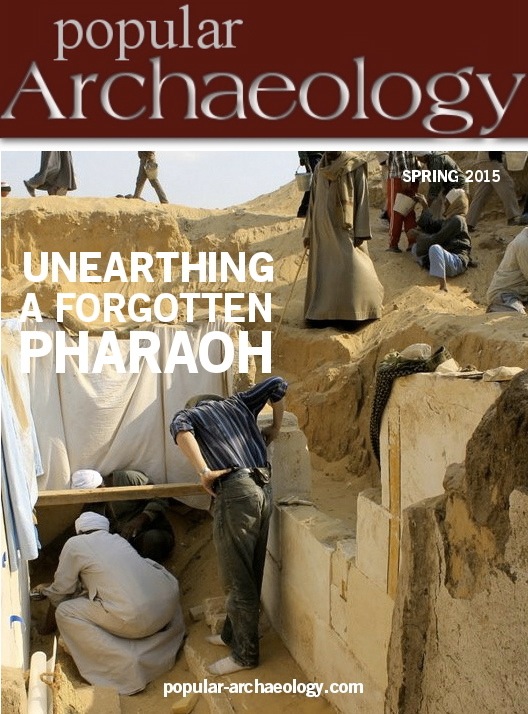 Did you like this? Read more articles like this with a premium subscription to Popular Archaeology Magazine.
Did you like this? Read more articles like this with a premium subscription to Popular Archaeology Magazine.
In addition, the latest Popular Archaeology ebook is now available.
______________________________________________
Travel and learn with Far Horizons.
____________________________________________
 Popular Archaeology’s annual Discovery Edition eBook is a selection of the best stories published in Popular Archaeology Magazine in past issues, with an emphasis on some of the most significant, groundbreaking, or fascinating discoveries in the fields of archaeology and paleoanthropology and related fields. At least some of the articles have been updated or revised specifically for the Discovery edition. We can confidently say that there is no other single issue of an archaeology-related magazine, paper print or online, that contains as much major feature article content as this one. The latest issue, volume 2, has just been released. Go to the Discovery edition page for more information.
Popular Archaeology’s annual Discovery Edition eBook is a selection of the best stories published in Popular Archaeology Magazine in past issues, with an emphasis on some of the most significant, groundbreaking, or fascinating discoveries in the fields of archaeology and paleoanthropology and related fields. At least some of the articles have been updated or revised specifically for the Discovery edition. We can confidently say that there is no other single issue of an archaeology-related magazine, paper print or online, that contains as much major feature article content as this one. The latest issue, volume 2, has just been released. Go to the Discovery edition page for more information.
____________________________________________






